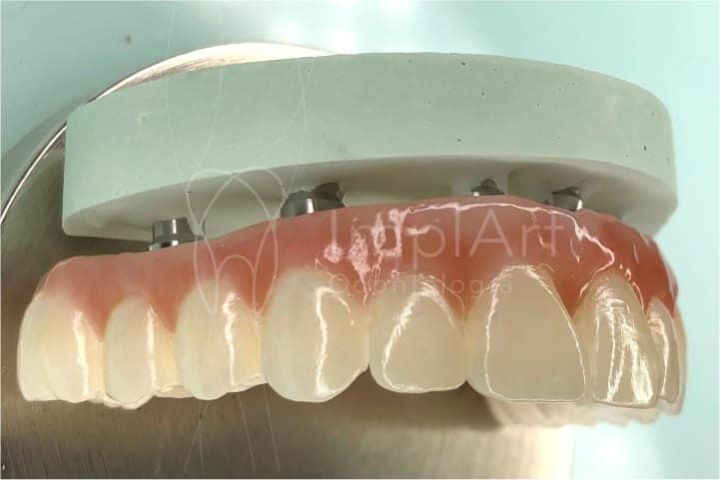
Planning for dental implants – how is it done by the dentist
How the Dental Implant Procedure is planned
Improve your quality of life and self-esteem with dental implants
Dental implants must be planned by a specialist in order to achieve the desired success. Initially, when studying dental implants, examinations are carried out in order to:
- Planning the final aesthetics of the dental prosthesis.
- Finding out if there is enough bone for the implant.
- Check for diseases that may contraindicate implants.
- Estimate whether it will be possible to immediately load the implants (place a fixed provisional).
- Plan the sites for inserting the implants, as well as their size (short or normal implants or zygomatic implants), diameter, quantity and inclination.
- Ensure that the correct number of implants is placed (between 1 and 8 implants).
- Imagining the best strategy for oral rehabilitation in conjunction with the prosthetics laboratory.
- Check which materials are best for finishing dental prostheses.
- Decide according to the patient’s general health whether the implant procedure will be done in the office or in hospital.
- Intraoral examinations to determine current dental conditions. The examinations mainly involve casts to analyze the arch, X-rays and CT scans.
- Digital panoramic radiography and computed tomography make it possible to observe general oral conditions and a detailed analysis of the bone and adjacent structures such as nerves, maxillary sinuses and teeth. These examinations can be carried out at ImplArt Odontologia (at a separate cost).

What resources can dentists use to plan implants?
It is important to explain that the dentist uses photos, examinations and clinical assessment in an integrated manner for precise dental implant planning.
- Initial Photos: Photos of the mouth and smile at the start of treatment capture the oral anatomy and help to visualize the general condition of the mouth, including the position of adjacent teeth and facial aesthetics.
- Radiographic examinations: Panoramic radiographs and CT scans also offer a three-dimensional view, allowing bone quality to be assessed, anatomical structures to be identified and pathologies to be detected.
- Clinical Evaluation: Detailed intraoral examinations reveal more in-depth periodontal conditions, the presence of infections and specific characteristics of the oral tissue, providing crucial information for implant success.
- Precise measurements: Using specific measurement software, the professional assesses the thickness and height of the available bone, thus ensuring the proper selection of the implant.
- Virtual Planning: Specialized software allows for virtual simulations, making it easier to choose the ideal position for the implants, considering aesthetics and function.
The combination of these elements also allows the dentist to carry out personalized planning, increasing the predictability and success of the dental implant procedure.
Planning is important for successful dental implant treatment
Dental implants are performed in the dentist’s office under local anesthesia, with care and attention from the implant dentist. Even those who are afraid of the dentist can have bone implants without any problem. Titanium implants are placed inside the bone and you have to wait three to six months for osseointeraction (calcification of the implant in the bone).
Once healing has taken place, the patient can wear a temporary prosthesis which allows them to better maintain their daily activities and also prevents the process of bone resorption (when the area is left without teeth for a long time, it can lose bone volume). Also during this period, the dentist makes the molds for the fixed dental prosthesis that will be placed after the implants have osseointegrated.
Temporary prosthesis for dental implants – planning
Despite the initial discomfort due to the implants and also the temporary prosthesis, the patient should wear it most of the time to facilitate adaptation. At first, the patient may feel nauseous, produce more saliva than usual and their pronunciation may also be strange. Of course, any discomfort in the meantime is temporary and must be overcome in order to achieve the best possible result.
However, in some cases, the dentist may opt to carry out the immediate loading procedure, in which the temporary prosthesis is fixed immediately after the implants are placed. This takes a maximum of 72 hours and, like all treatments, must be planned in advance to avoid problems in the future.
Read more: Dental implant recovery time
See specific techniques for implanting the front tooth.
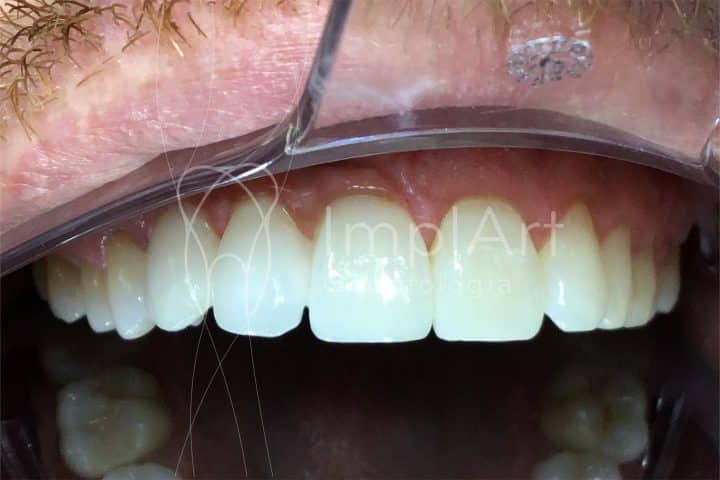
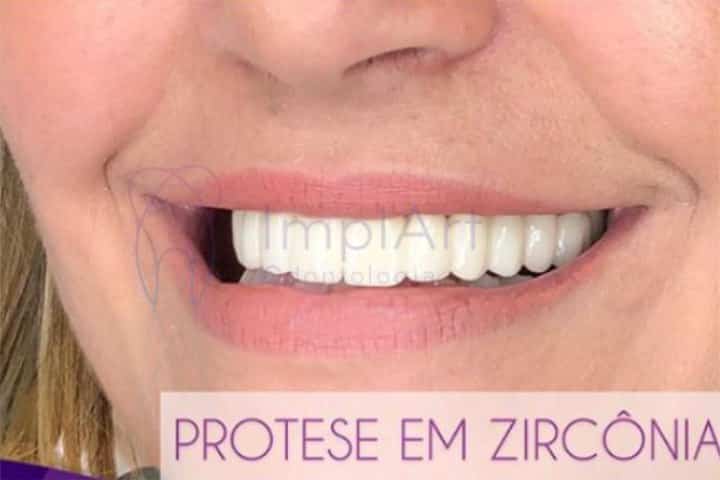
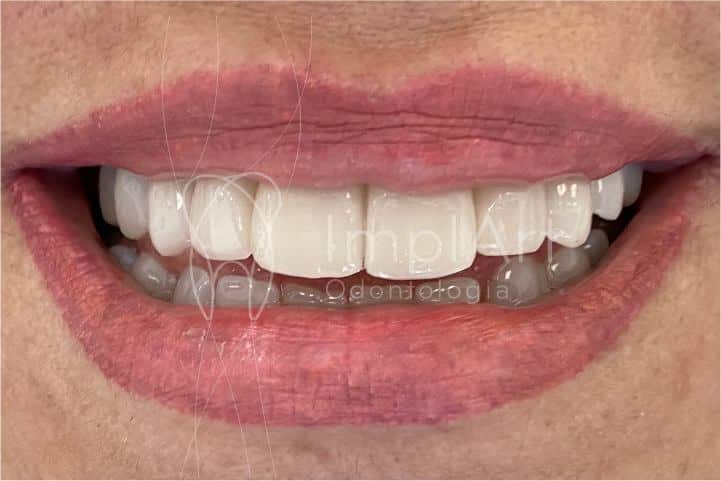
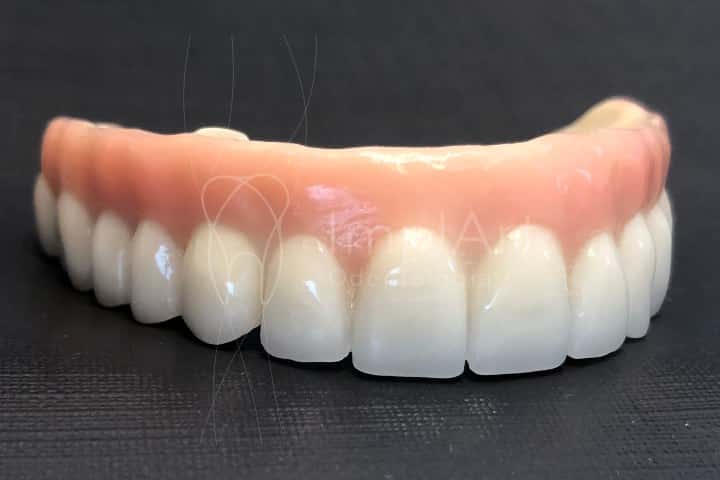
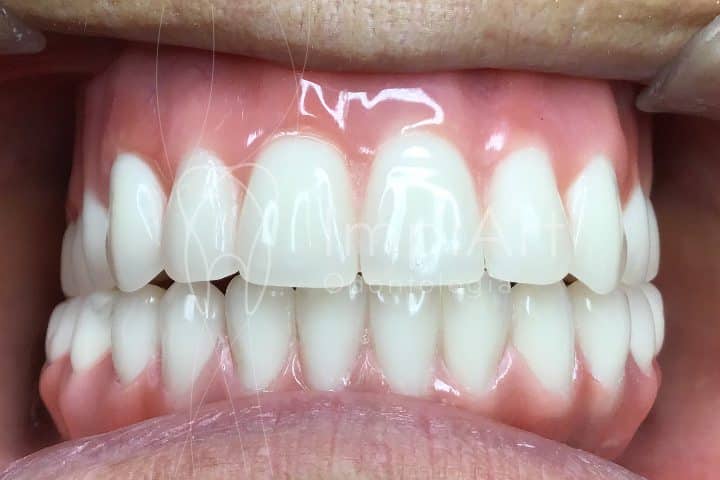
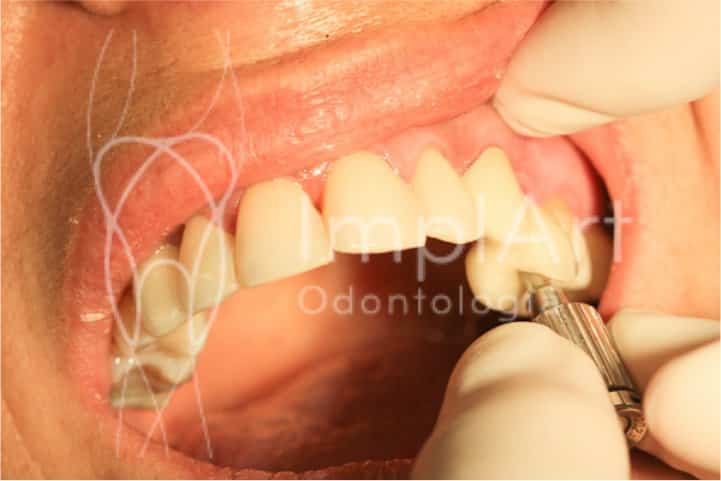
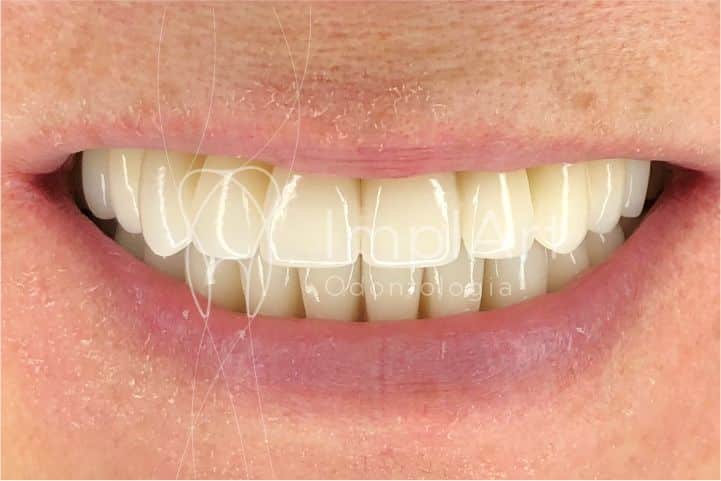
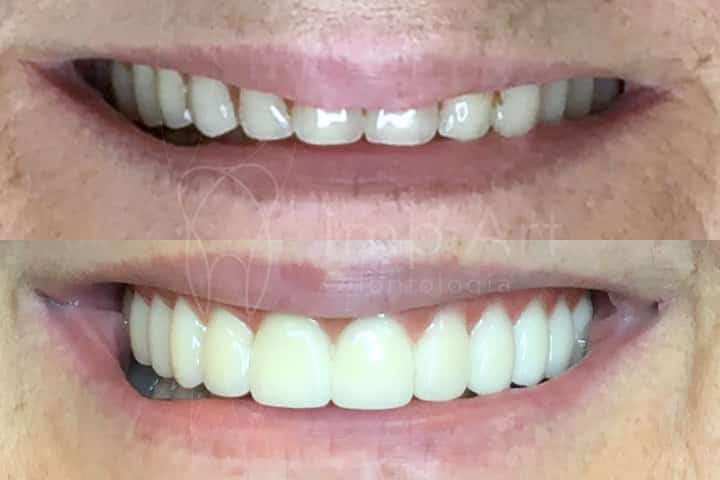
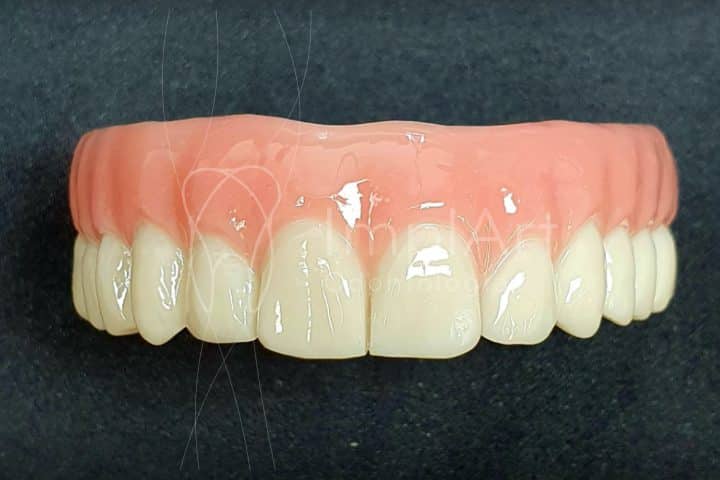
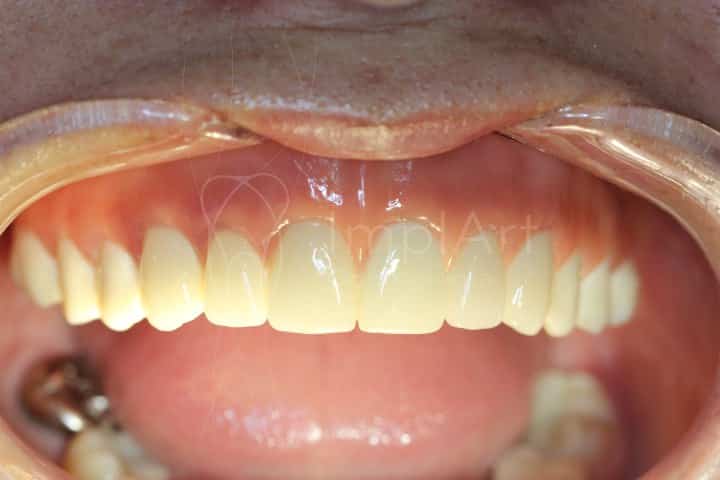
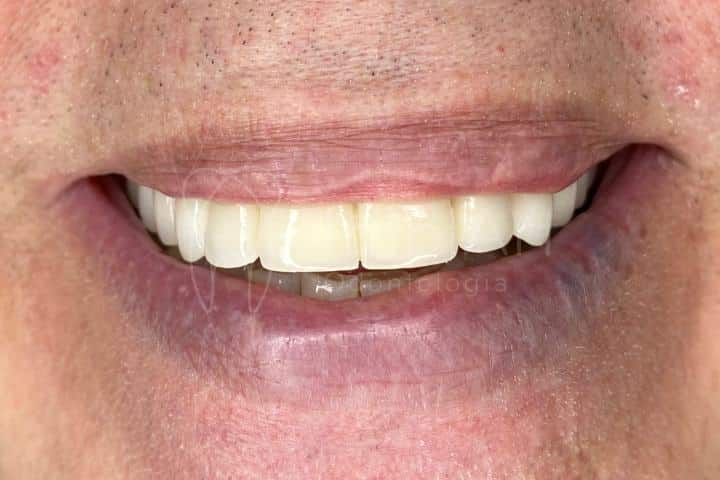
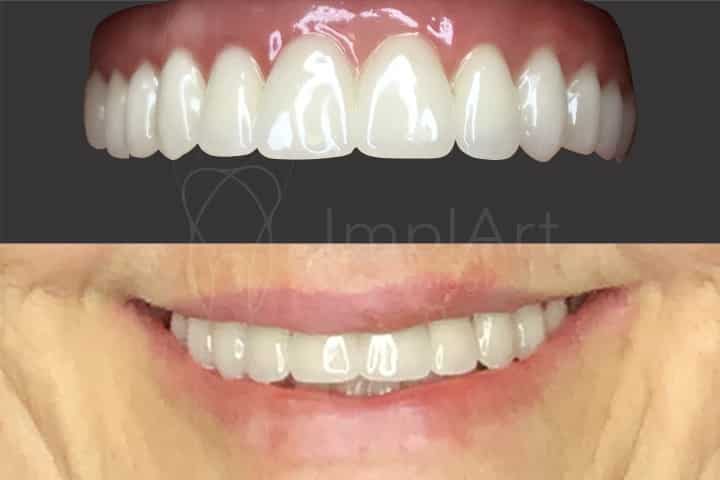
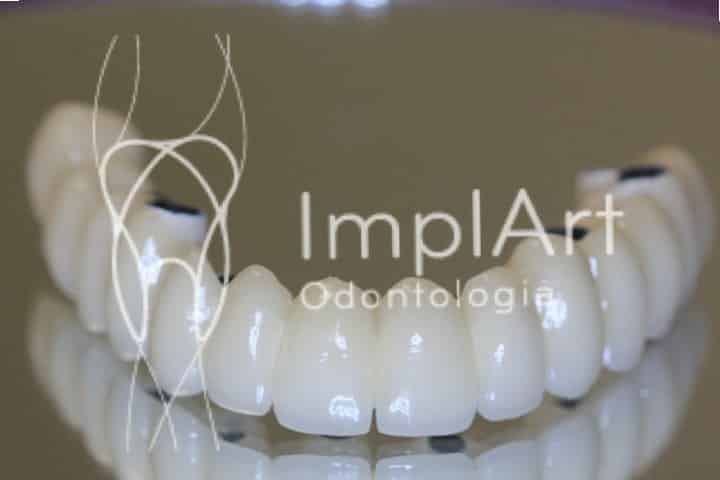
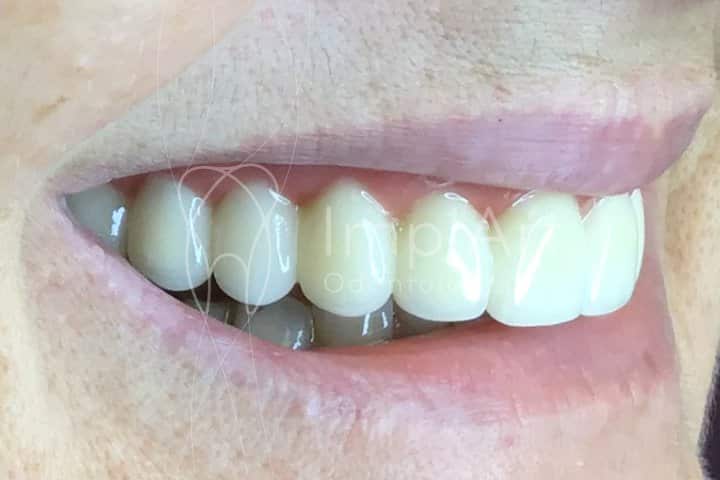
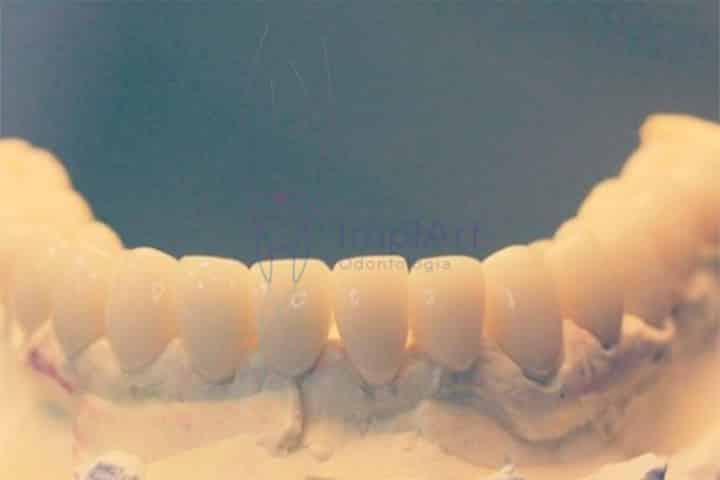
Permanent fixed prosthesis for implants
Finally, a permanent prosthesis will be fixed a few months after the implants have healed and the person will experience a significant improvement in chewing, quality of life and the aesthetics of their smile. The materials for the permanent prosthesis can also be chosen by the patient together with the dentist.
There are several options for implant materials, especially in the case of full arches, the so-called protocol prosthesis. Contact our clinic or make an appointment if you have any questions about the treatment, average price or techniques. We’ll be happy to help you!
 Agende sua consulta agora por WhatsApp
Agende sua consulta agora por WhatsApp
Leave a Reply